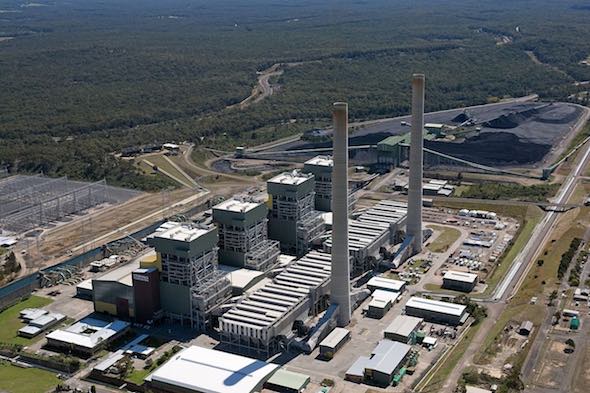We are talking about a delay in the closure of Eraring and other coal-fired power stations as if it is our only option for secure and reliable power in NSW in the immediate future. It is not. For two reasons.
First, there is no identified gap in supply, even if Eraring closes. Second, there is a clear way to take out a sensible level of ‘insurance’, without the financial and emissions costs of delaying closure of coal-fired power stations.
The Australian Electricity Market Operator (AEMO) and the NSW advisor AEMO Services both confirmed in February 2023, after undertaking reviews, that any reliability gaps identified as a consequence of Eraring and other power station closures are already being addressed.
AEMO stated that “the reliability risks in NSW relative to the 2022 ESOO have decreased” and AEMO Services in the Energy Security Target Monitor report confirmed that “the projects underway in NSW, committed and anticipated, are forecast to resolve all EST breaches over the 10-year assessment horizon”.
The next Electricity Statement of Opportunities (ESOO) is scheduled to be released at the end of August. It would beg serious questions about methodologies and motivations if AEMO’s reliability forecasts have changed significantly in six months.
Secure and reliable electricity is absolutely fundamental to households and business alike. So, insurance is sensible and responsible. However, for that, NSW has clear alternatives to extending Eraring.
The NSW Government received 3.3 GW of proposals for long-duration storage in its first auction. In Tender 2 it is seeking at least 930 MW of firming capacity to be delivered by Dec 2025, and further firming in Tender 3.
Wouldn’t the most cost-effective option be to ensure that AEMO Services procures all the available firming capacity before the government considers investing around $400 million per annum to extend the life of an aging, unreliable, and expensive coal-fired power station?
Firming capacity, as has been clearly demonstrated, is fairly quick to build (around 18 months for a large battery) and often uncontroversial as the batteries can be located in existing power or brown field sites.
And it already has a runway – the Federal Government’s Energy Minister, Chris Bowen, and the NSW Government’s Energy Minister, Penny Sharpe, recently announced the funding of more than 550 MW of battery capacity (with at least two hours storage) through the Capacity Investment Scheme.
In addition to these two points, it is clear that we have the appetite and interest to build the renewable generation and storage that we need to power NSW’s future. Only two months ago Minister Sharpe reassured us that:
“There is significant interest in investing in NSW’s energy transition, both inside the Renewable Energy Zones and outside the REZ, which signals that any risks around grid reliability can be resolved by accelerating the development of a clean, reliable, consumer-focused energy system.”
Nexa Advisory’s own analysis confirms the Minister’s view – the NSW project pipeline ahead of the Eraring closure totals of 4.3 GW of committed and anticipated projects and a further 32 GW of proposed projects. This is more than sufficient.
What we need to do is expedite these projects, prioritise and accelerate connections of key projects, continue to bolster the firming and storage tenders, and redirect the $1bn funding that NSW Labor pledged at the last election to speed up such investments.
Across Australia more generally though, we need to lean into, not away from, the transition build. We are lagging behind on building the wind and solar generation capacity needed for our clean energy transition.
Plus, even if we could build the wind and solar farms, or pumped hydro, we still need to build the 10,000km of new transmission lines to connect it to the national electricity market –that is 25% of today’s grid in 10 years.
We don’t need a blank check from the taxpayer. Some funding is needed. However, more important than any dollars, is governments removing road blocks in planning and regulation, and supporting genuine engagement with communities. It is also key that markets are opened, so that the best providers can do the job quickly.
We need better investment, competition, and collaboration. And we need to understand we are in a race against every other country in the world who is trying to transition at the same time.
The worldwide renewable energy sector is set to boom over the next three decades. Such rapid and massive growth will significantly increase demand for labour, expertise, materials and specialised electrical equipment – we are a tiny player, that is a long way from anywhere.
There is an answer. The global leaders in energy are already here. But we don’t let them bid in the tenders for these projects. That means, we don’t get the benefit of their experience, their economies of scale, their supply chains and their influence – or their funding. Open the tenders, open the market up. We will build faster, and cheaper.
Nexa Advisory’s analysis shows that consumers would be cumulatively $2,250-3,000 worse off over the next ten years if the transition is not effectively managed and if the closure of coal-fired power stations is delayed.
Propping up aging and unreliable coal plants is not a plan. Even if governments hadn’t legislated emissions and renewable generation targets, the cost to their voters’ hip pockets should be enough to change the conversation.
We’ve had decades of delays to our energy transition. Further funding aging power stations at a cost of $400m to the taxpayer per year is not the answer. It only means that we will have lower reliability and higher costs and emissions over the long term.
It is far better to invest in solutions today that bring energy costs down, and leave energy consumers, taxpayers and the nation much better off and well on the way to a clean energy future. We need to act right now.
Stephanie Bashir is CEO of Nexa Advisory, and an energy specialist









